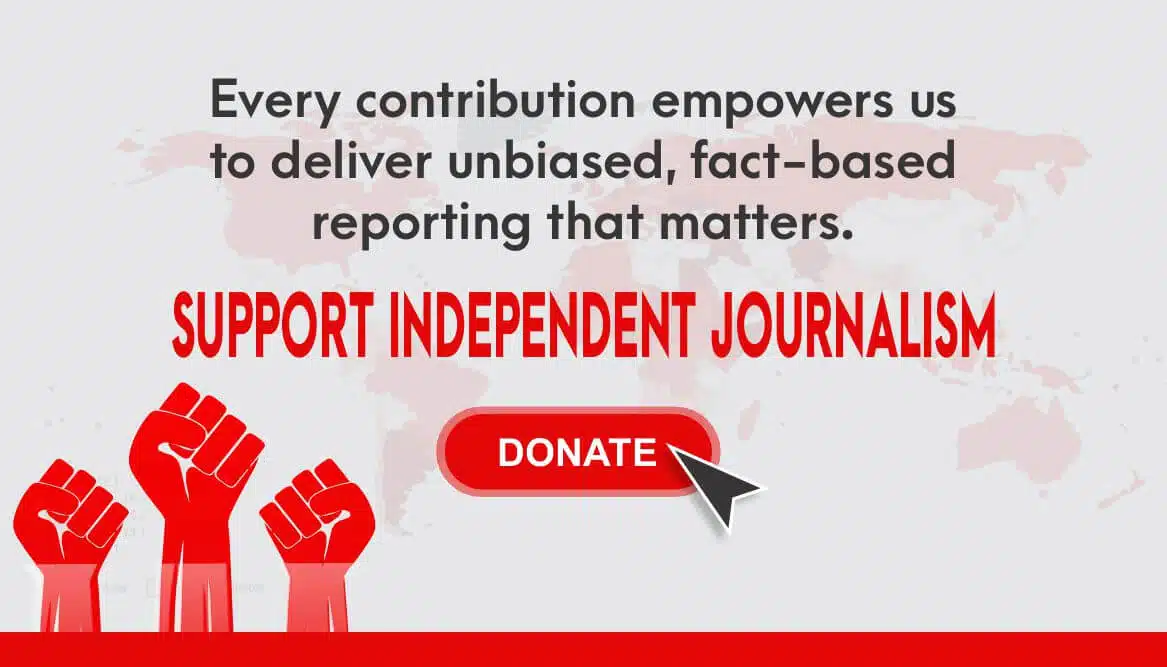Though considerable progress has been made in recent years in Nigeria and other African nations, in the fight to combat mal-nutrition or undernutrition, a lot more still remains to be done; this is because the percentage of health problems related to under-, or malnutrition, is still at an unacceptable level in most African countries.
In this paper, we will discuss the causes of mal-nutrition, especially in the most vulnerable groups of people – children 5 years and under, women of reproductive age, pregnant women, and the elderly; we will also discuss the impact of food security on the following childhood health problems like stunting, severe wasting, wasting, underweight, and Obesity among children.
We will also discuss and appreciate the importance of the following in the maintenance of good nutrition: Micronutrients (iron, zinc, vitamins, iodine, etc.), macronutrients (protein, fats, calories, etc.) Also, we will discuss the four dimensions of food security which includes Availability, Accessibility, Utilization, and Stability. We will also look at the significance of nutrition and food security on health.
Finally, we will examine the impediments to food security in African, and offer possible solutions toward overcoming them.
In 2003, 2011, and 2015, according to available World Health Organization, and World Bank Group data, the percentage of children under the age of 5 years, and who suffer from the five classes of malnutrition in Nigeria, and some other African nations were as follows:
Africa: 2011 6-Country Malnutrition Data (WHO, WB)
| Severe Wasting | Wasting | Underweight | Overweight | Stunting | |
| Burkina Faso | 2.40% | 10.20% | 24.40% | 0.00% | 34.10% |
| Ghana | 1.40% | 6.20% | 13.40% | 2.60% | 22.70% |
| Mauritania | 4.00% | 13.90% | 24.40% | 3.20% | 29.70% |
| Mozambique | 2.30% | 6.10% | 15.60% | 7.90% | 43.10% |
| Nigeria | 3.10% | 10.20% | 24.40% | 3.00% | 36.00% |
| Uganda | 1.50% | 4.80% | 14.10% | 3.80% | 33.70% |
Nigeria – multi-year malnutrition data (WB, WHO)
| 2003 | 2011 | 2015 | |||
| Severe Wasting | 4.80% | 3.10% | 1.80% | ||
| Wasting | 11.20% | 10.20% | 7.20% | ||
| Overweight | 6.20% | 3.00% | 1.60% | ||
| Underweight | 27.20% | 24.40% | 19.40% | ||
| Stunting | 43.00% | 36.00% | 32.90% |
Ethiopia: multi-year malnutrition data (FAO, WHO)
| 2011 | 2014 | 2016 | ||||
| Severe Wasting | 2.90% | 2.50% | 2.90% | |||
| Wasting | 10.10% | 8.70% | 9.90% | |||
| Overweight | 1.80% | 2.60% | 2.80% | |||
| Underweight | 29.20% | 25.20% | 23.60% | |||
| Stunting | 44.20% | 40.40% | 38.40% |
Ghana – 2011 & 2014 malnutrition data (FAO, WHO)
| 2011 | 2014 | |||||||
| Severe Wasting | 1.40% | 0.70% | ||||||
| Wasting | 6.20% | 4.70% | ||||||
| Overweight | 2.60% | 2.60% | ||||||
| Underweight | 13.40% | 11.00% | ||||||
| Stunting | 22.70% | 18.80% | ||||||
While a progressive trend is noticeable over the years in some areas in the three individual countries since 2011, especially in areas of severe wasting, wasting, and overweight, much effort is still required by government and healthcare agencies in the areas of underweight and stunting in Nigeria, and severe wasting, wasting, stunting, and overweight in Ethiopia. The overweight trend in Ghana appears to hold steady for the periods under review, while only a little over 2 percentage points each have been shed between 2011 and 2014 – a period of 3 years – in wasting, underweight, and stunting categories. Overall, a lot remains to be done.
Causes of Malnutrition/Undernutrition
Severe micro – and macro-nutrient deficiencies is the major cause of, at least, three – underweight, stunting, and wasting – of the five mal-nutrition problems suffered by children 5 years and under in Nigeria, and Africa in general. Deficiencies in micro-nutrients like iron, zinc, vitamin A, and iodine (among many others), which are chemical elements found in the body in small quantities for normal growth and development of humans and other living organisms; and in macro-nutrients which are required in large amounts by humans to develop and grow, like carbohydrates (55-75%), protein (10-15%), and fats (15-35%), contribute to, if not the main cause of all the listed mal-nutrition problems that continue to plague mostly the 5 and under population, pregnant women, those of childbearing age, and the poor and illiterate population in African countries. These nutrients come from food and/or various multivitamin supplements. Now, how does one ensure adequate supply and intake of these nutrients to produce the desired health results? This is where food security is important.
Food security
Food security, according to the 2009 World Summit On Food Security, “exists when all people, at all times, have physical, social and economic access to sufficient, safe and nutritious food, which meets their dietary needs and food preferences for an active and healthy life”. Quite a mouthful, but it encompasses so many things that will be discussed in details when we look at the four dimensions of food security: availability, access, utilization, and stability.
- Food Availability:
“Water, water everywhere but nary enough to drink”. This is the same situation with food availability. For food to be considered available, a family has to have adequate, sufficient, and diversified supply of food to meet their daily nutritional needs. In other words, a family has to have available to its disposal enough combination of nutrition-rich foods to continuously satisfy its needs. Unfortunately, this goal is never achieved, even in industrialized nations with perennial records of excess food production, for reasons that will be explained later
- Food Access:
This is broken down into three types; economic, physical access, and social support;
- Economic access – disposable income, food prices, and access to social support systems all determines the level of economic access a family has to food. Where disposable income is low, especially in large families with multiple responsibilities, though food may be accessible, budgetary allocations for food may not be adequate to access the needed quantity, quality, and diversity to meet nutritional requirements. Also, food prices do play a major role in accessibility; again, in a low income or large family environment, high food prices will force difficult choices that may result in choosing quantity over quality. This is the situation in many Third world countries, and even some poor sections of industrialized nations. A family in rural Africa may choose to eat cassava or corn meal two to three times a day, because it is heavy enough to satisfy the hunger pangs, and very much affordable. Same thing in a low-income family in the US which might elect to feed on Jumbo Jacks and fried chicken because of the filling effect in the stomach.
- Physical access – in this case, though the food may be available, along with the disposable income to buy, physically accessing the food is either difficult or impossible. This happens mostly due to lack of availability of infrastructure – roads, rail, ports, communication, and storage facilities – to transport the food from the farms and processing plants to the market or consumers. This results in wastage of most of the harvest, and the few that make it to market are priced so high that they become unaffordable by the average consumer, because of the high cost of transportation/conveyance that has been passed on in the retail prices
- Social support – social support augments shortfalls in economic and physical access. In developed nations of the US and Europe, governments have established social support programs, through their agriculture and commerce ministries, and in alliance with states, local governments, non-governmental agencies – including churches -, and agricultural firms to provide foods and other nutritional products for those who may need such services to augment their incomes.
Churches and many NGOs have set up food pantries and soup kitchens for families, homeless people, and even individuals who are temporarily between jobs, to cater for their nutritional needs. State governments, also, have programs to provide pre- and post-natal nutritional needs for pregnant women and their babies, either in the form of redeemable coupons at grocery stores or debit cards with which to buy only food and non-taxable items, at grocery stores. Only a handful – or even less – of African countries provide this support to the disadvantaged of its population. Even in the few countries where such services exist, corrupt practices by those in charge ensure that the needy are denied access to this support service.
- Food Utilization:
A family could have food access and availability without proper utilization, and this can result in mal- or undernutrition. Lack of proper food utilization can be determined through the measurement of the size and proportion of the human body, to ascertain whether that person suffers from stunting (caused by prolonged inadequacy of food intake), wasting (short-term inadequacy of food intake), overweight/underweight, or severe wasting. With food underutilization, families simply eat to fill their stomachs without consideration for nutritional balance; the day’s meal could be an all-carbohydrate/starch, or all-vegetable meal, but never a combination of both and plus fruits to have a balanced meal. In many African countries, including the ones with yearly abundant harvests like Nigeria, Zimbabwe, Ethiopia, and Uganda, consumption of unbalanced meal combinations still persist, due largely to minimal nutritional/dietary education.
Other factors include the quality of food, methods of preparation, and health/hygiene conditions. Most times, due to low income or limited access, most of the food products are already in advanced stages of rot and decay before reaching the consumer. At this stage, it has already lost most of its nutritional value and is of no benefit to the consumer. Also, in some cases where the food is still fresh from the farm, or markets, the proper cooking method is never applied. Either the vegetables are under-cooked, resulting in not accessing the full nutritional content, or overcooked, thus resulting in the killing of most if not all of the nutrients. Again, this could be attributed to lack of proper dietary/nutritional education. Finally, unsanitary food storage facilities at the markets, warehouses, and private homes could lead to early decomposition or spoilage, which results in severe loss of nutritional content and value to the consumer.
- Food Stability:
The last step in food security is stability, and this happens in two forms; stable food supply and stable food prices.
- Stable food Supply – uneven weather patterns can affect food supplies. Some African nations like Southern Sudan, Somalia, and countries near the Sahara desert suffer occasional droughts which affect production. Typhoons and tsunami in some Asian countries, El Nino and hurricane effects in central and North America also affect harvest outputs in these countries. Even the warmer ozone effects on the arctic regions of, Russia, Alaska, and the Scandinavian countries affect the supply of some food products from that region. When weather patterns are even and favorable, food supplies tend to be high due to increase in harvest; this will increase global and, eventually, local food supply. The reverse is the case when weather patterns are unfavorable; output drops, creating widespread food scarcity.
- Food Price – The effects of uneven weather patterns on food production and supply result in changes in global food prices. These changes can be indirect at international supply levels, or direct at local end-user levels. When global or regional supply is low, food prices go up and families have to choose between nutritionally balanced meal and one that just satisfies the hunger pangs. This is the choice that faces most consumers in African countries. On the other hand, when food supplies are high and steady and stable, families can make healthier purchase combination choices.
So, the battle against malnutrition/undernutrition in Africa starts with food security; physical and economic access to a stable available supply line of food that is properly utilized. Any interruption along these chain of food security, either due to low income, inadequate infrastructure, and uneven weather patterns affecting growth and harvest and price fluctuations, will impact nutritional intake level of the most vulnerable of the African population which are children 5 and under, pregnant women, and women of childbearing age, and result in problems of wasting, severe wasting, under and overweight, and stunting problems.
What African Nations Can Do
African governments do know that the problem of malnutrition/undernutrition is a serious one in the continent, and some have declared some sort of state of emergency on agriculture; however, their best efforts are still hampered by inadequate budgeting, planning, and implementation. Also, poor preservation/storage and processing facilities are still lacking in most of these countries; so, even where you have a bumper harvest of all the necessary food products, most of the harvest is either rotting away or never make it to the consuming public due to poor infrastructure and distribution network.
Public enlightenment programs on nutrition and dietary requirements (including televised public service programs on proper meal combination and preparation) for the 5-under population, expectant mothers, and women of childbearing age should be a constant of every country’s health and agriculture ministries and agencies. For the rural poor, social support services should be provided to assist them in meeting their daily nutritional needs, either by instituting at least one free balanced lunch programs in every kindergarten elementary school, or issuing coupons to families making below a certain income level to augment their food budget.
Finally, African countries and regional bodies should pursue inter-regional economic relationships that will ensure steady supply of nutritionally essential commodities even in the times of drought and other severe weather patterns which negatively affect the continent’s or global food production and supply.
Conclusion
When African countries and governments put in place the right programs to ensure complete and unabridged food security in the continent in which every family have uninterrupted access to adequate, balanced and affordable food supply, the nutritional problems of the continent, which include over/underweight, stunting, wasting, and severe wasting will be one less problems the continent will have to worry about. To achieve any major success in this battle, the political will and determination to act has to be recognizable among the leadership.
Felix Oti
Arlington, Texas
felix.oti@outlook.com







